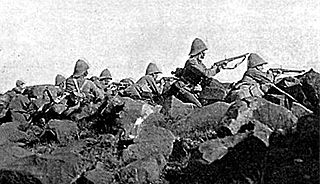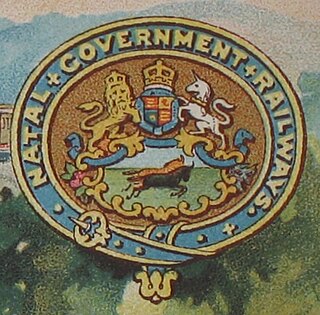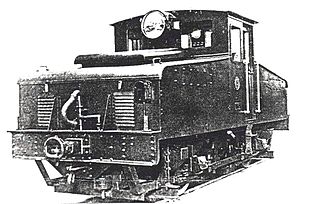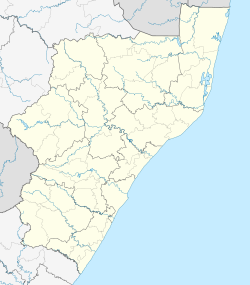
Ladysmith is a town in the Uthukela District of KwaZulu-Natal, South Africa. It lies 230 kilometres (140 mi) north-west of Durban and 365 kilometres (227 mi) south-east of Johannesburg. Important industries in the area include food processing, textiles, and tyre production. Ladysmith is the seat for both the Alfred Duma Local Municipality and Uthukela District Municipality.

Estcourt is a town in the uThukela District of KwaZulu-Natal Province, South Africa. The main economic activity is farming with large bacon and processed food factories situated around the town. The N3 freeway passes close to the town, linking it to the rest of South Africa.
Glencoe is situated in the Umzinyathi District, District of KwaZulu-Natal, South Africa.

The N3 is a national route in South Africa that connects Johannesburg and Durban, respectively South Africa's largest and third-largest cities. Johannesburg is the financial and commercial heartland of South Africa, while Durban is South Africa's key port and one of the busiest ports in the Southern Hemisphere and is also a holiday destination. Durban is the port through which Johannesburg imports and exports most of its goods. As a result, the N3 is a very busy highway and has a high volume of traffic.

The Battle of Spion Kop was a military engagement between British forces and two Boer Republics, the South African Republic and the Orange Free State, during the campaign by the British to relieve the besieged city Ladysmith during the initial months of the Second Boer War. The battle was fought 23–24 January 1900 on the hilltop of Spioen Kop(a), about 38 km (24 mi) west-southwest of Ladysmith and resulted in a Boer victory.

The siege of Ladysmith was a protracted engagement in the Second Boer War, taking place between 2 November 1899 and 28 February 1900 at Ladysmith, Natal.

The SecondBattle of Colenso, also known as the Battle of Colenso, was the third and final battle fought during the Black Week of the Second Boer War. It was fought between British and Boer forces from the independent South African Republic and Orange Free State in and around Colenso, Natal, South Africa on 15 December 1899.

The Colony of Natal was a British colony in south-eastern Africa. It was proclaimed a British colony on 4 May 1843 after the British government had annexed the Boer Republic of Natalia, and on 31 May 1910 combined with three other colonies to form the Union of South Africa, as one of its provinces. It is now the KwaZulu-Natal province of South Africa.

The Relief of Ladysmith consisted of multiple efforts to relieve the city of Ladysmith by General Sir Redvers Buller during the Second Boer War. Buller and the Natal Field Force attempted to relieve the city through multiple offensive actions. The city had been under siege since 2 November, 1899, and Britain had sent General Buller to relieve the city. After consolidating his Forces at Estcourt through most of November and early December, he began his relief of the city. The attempts to relieve the city started on 15 December at the Second Battle of Colenso, in which the British forces were repelled by the Boers on the Tugela River. The next two attempts were repulsed by the Boers, however at the Battle of Pieters Hill in February 1900, the Boers were eventually beaten from the city and forced to withdraw to Botha's Pass near Newcastle. Buller and his Forces entered the city on February 28, 1900, officially ending the Siege of Ladysmith.

The Battle of Ladysmith was one of the early engagements of the Second Boer War. A large British force which had concentrated at the garrison town of Ladysmith launched a sortie on 30 October 1899, against Boer armies which were slowly surrounding the town. The result was a disaster for the British. The main body was driven back into the town, and an isolated detachment of 800 men was forced to surrender to Commandant De Wet. The Boers did not follow up their advantage by proceeding towards the strategically important port of Durban, and instead began a siege of Ladysmith, which was relieved after 118 days. John Norwood was awarded the Victoria Cross for his actions during the battle.

The Battle of Tugela Heights, also known as the Battle of Pieters Hill, Battle of the Pieters, or the Battle of the Tugela River, consisted of a series of military actions lasting from 14 February through to 27 February 1900 in which General Sir Redvers Buller's British army forced Louis Botha's Boer army to lift the Siege of Ladysmith during the Second Boer War.

The Natal Government Railways (NGR) was formed in January 1877 in the Colony of Natal.

Colenso Power Station was a South African coal-fired power station, located in Colenso, KwaZulu-Natal on the banks of the Tugela River. It was built in the 1920s by the South African Railways to supply electricity for the railways, and was subsequently sold to the Electricity Supply Commission (Eskom).

The South African Railways Class ES1 of 1924 was an electric locomotive.
Major General Sir Geoffrey Barton, of the 7th Regiment of Foot, served the British Army from 1862 until 1904. Although he saw service in Ireland, Hong Kong and India, the majority of his campaigns were on the African continent. During the Second Boer War he was put in command of the 6th Brigade of the South Natal Field Force, taking part in the Relief of Ladysmith and the Relief of Mafeking. When he retired to Scotland he took an interest in local politics, the Red Cross Society and the Boy Scout Movement.
The Natal Field Force (NFF) was a multi-battalion field force originally formed by Major-General Sir George Pomeroy Colley in Natal for the First Boer War. It was later re-established for the Second Boer War (1899–1902) and commanded by Major-General Sir Redvers Buller VC GCB GCMG.
The South African Light Horse regiment of the British Army were raised in Cape Colony in 1899 and disbanded in 1907.

The Battle of Chieveley took place on 15 November 1899, and was an ambush on a British armored train travelling from Estcourt to Colenso in a reconnaissance mission. Boer forces under the command of Louis Botha, which comprised primarily the Italian Volunteer Legion, ambushed the armored train, and derailed it, taking most of the British soldiers prisoner. Commanding the British forces on the armored train was Colonel Charles James Long, who had received reports a day earlier about Boers in the area, hence the reason for sending out the armored train.

The Northern Natal Offensive was a military invasion of the Northern region of Natal by the Boers of the Transvaal and the Orange Free State during the Second Boer War. It was part of a larger offensive by the Boers into the British colonies, with other invasions occurring in Bechuanaland and the Cape Colony. The Boers invaded on 12 October, after Paul Kruger had declared war a day earlier. The Boers initially had success with this offensive, besieging Ladysmith, and reaching as far south as Estcourt in November 1899. The goal of the offensive for the Boers was to reach the port city of Durban and the capital of Pietermartizburg in order hopefully force the British into peace negotiations. However, with Redvers Buller's reinforcements arriving that same month, the Boers retreated to the Tugela River. Multiple attempts were made by Buller to relieve Ladysmith, but to no avail. However, the fourth attempt in February 1900 expelled the Boers from their position at the Battle of the Pieters. Scattered fighting from March-May 1900 continued, with the Boers being expelled from Natal completely at the Battle of Laing's Nek. With the Boers out of Natal, the offensive ended.
The First Battle of Colenso, often called the Skirmish of Colenso, was a military engagement between the Durban Light Infantry and a Boer commando. At the time, the Boers had just surrounded the city of Ladysmith, placing them under siege.




















